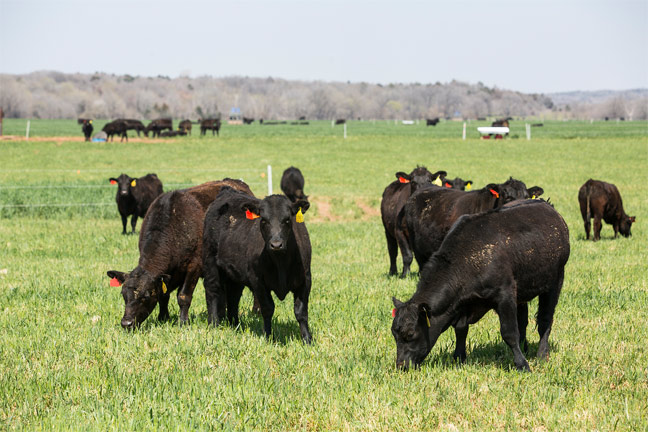
Agricultural News
Stocker Margins Squeezed as Feedlots Use Cheap Feed to Increase Demand for Light Weight Cattle
Mon, 06 Mar 2017 11:23:09 CST
 Mondays, Dr. Derrell Peel, Oklahoma State University Extension Livestock Marketing Specialist, offers his economic analysis of the beef cattle industry. This analysis is a part of the weekly series known as the "Cow Calf Corner" published electronically by Dr. Peel and Dr. Glenn Selk. Today, Dr. Peel examines the impact cheap grain is having on stocker cattle prospects.
Mondays, Dr. Derrell Peel, Oklahoma State University Extension Livestock Marketing Specialist, offers his economic analysis of the beef cattle industry. This analysis is a part of the weekly series known as the "Cow Calf Corner" published electronically by Dr. Peel and Dr. Glenn Selk. Today, Dr. Peel examines the impact cheap grain is having on stocker cattle prospects.
"The primary function of markets is to figure out what gets produced and what resources are used to accomplish that production. While broader supply and demand forces determine what gets produced and how much is produced, the question of how to produce is particularly tricky in the cattle industry. The ruminant biology of cattle provides tremendous flexibility in how cattle are produced but also means lots of challenges to figure out how to produce cattle most competitively. In the complex, multi-sector world of cattle production, this coordination is directed by dynamic market signals driving stocker and feedlot production adjustments in the face of changing feed resource values. Feed grain prices dictate feedlot cost of gain which drives feedlot demand for feeder cattle of various weights. As feedlots determine whether they would rather buy lighter weight animals and add weight in the feedlot or buy more weight from the country, the resulting feeder price relationships across weights will change and provide the corresponding signal for stocker or backgrounding producers. Ultimately, the market is trying to figure out which sector can add weight to feeder cattle most cost effectively.
"Over time and on average, feeder cattle price relationships reflect feedlot cost of gain as the value of gain for stocker cattle. However, at times feeder markets will be "out of equilibrium" for a few weeks to a few months. Record feed grain supplies and low feed prices were not fully reflected in lightweight feeder cattle prices in the second half of 2016 and into early 2017. However, feeder prices in the past month or so have increasingly adjusted to reflect the continued reduction in feedlot cost of gain. As recently as the third week of January, the price of 500 pound, Number 1 steers in Oklahoma was about $162/cwt. or $810 per head while 800 pound steers were priced at $132/cwt. or $1058/head. This implied a value of gain of $0.82/pound for 300 pounds of weight gain. In contrast, for the week ending March 3, 500 pound steers in Oklahoma were priced at $164/cwt or $822/head while 800 pound steers were priced at $125/cwt. or $997/head, leading to a value of gain of $0.58/pound for 300 pounds of gain. The current feeder market appears to be fully reflecting low feedlot cost of gain.
"Cheap feed grain ultimately means feedlots want to put more weight on cattle in the feedlot compared to buying that weight and implies increased feedlot demand for lighter weight animals relative to heavy feeders. In short, low feedlot cost of gain squeezes stocker margins and changes the signals for stocker production. In general, cheap grain results in stocker production incentives to utilize lighter weight stockers and turn them over more quickly by selling at lighter feeder weights. This is in sharp contrast to much of the past few months when there were strong market signals to add weight in the country and take stockers to heavier weights before marketing. Stocker producers grazing out wheat or looking ahead to summer stocker grazing should carefully evaluate production and marketing plans with respect to purchase weight, enterprise length and sale weight of stocker cattle. Until or unless feed grain prices increase significantly, stocker margins will generally be squeezed; though seasonal opportunities will continue to be offered in the market."
WebReadyTM Powered by WireReady® NSI
Top Agricultural News
More Headlines...




